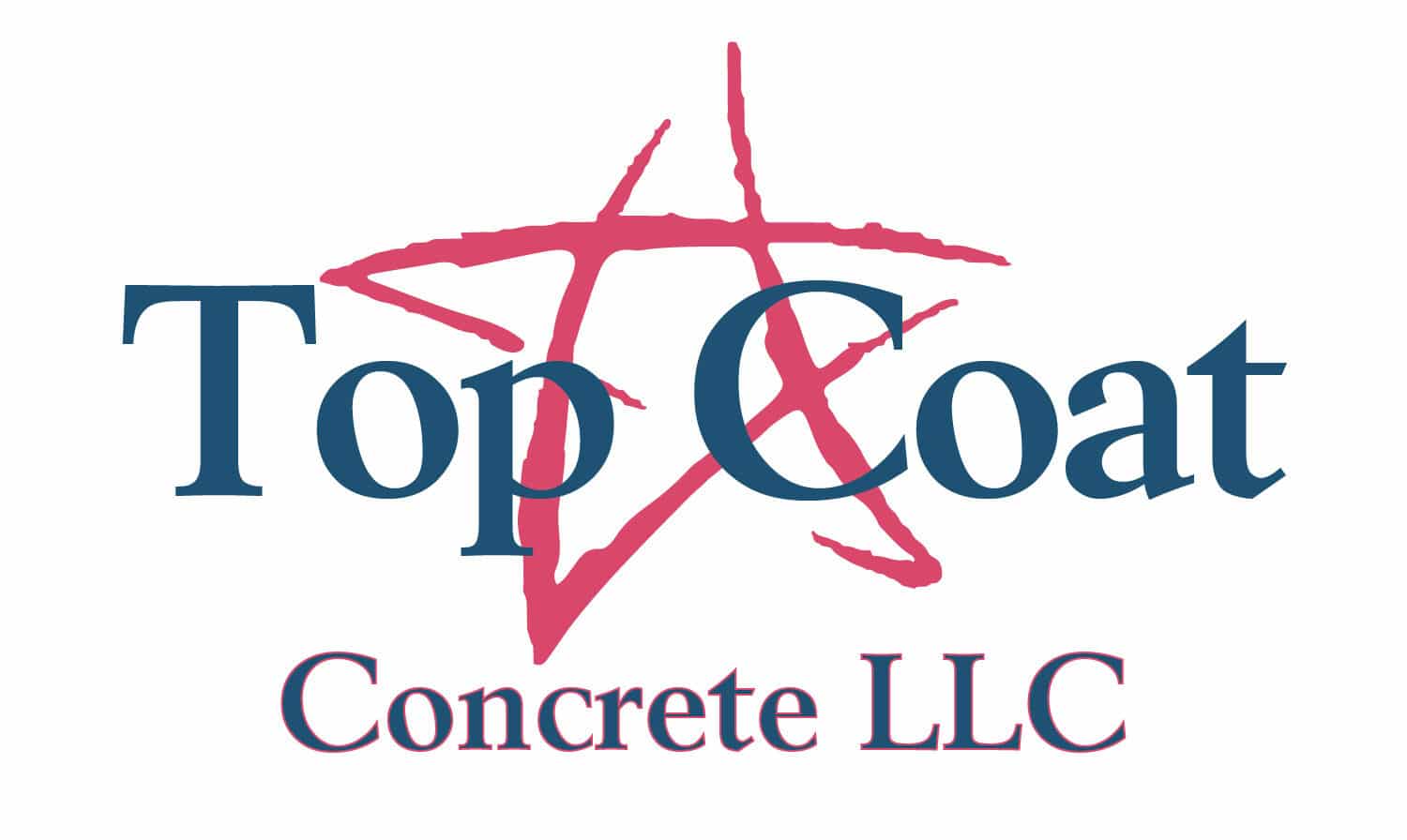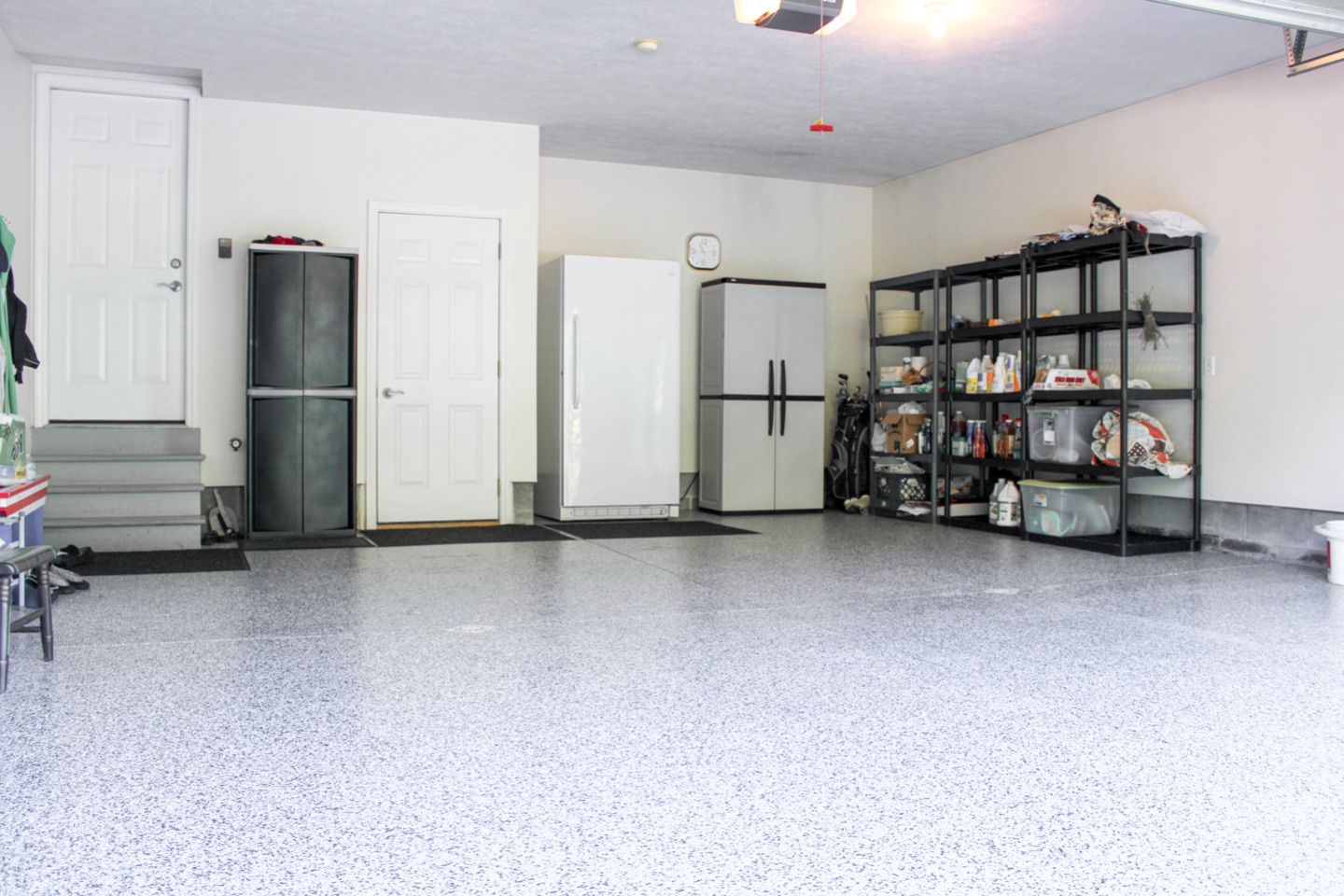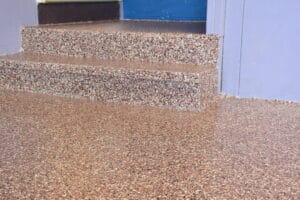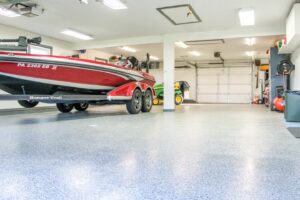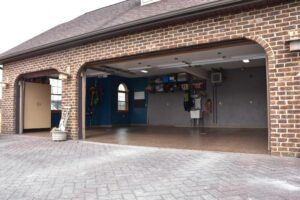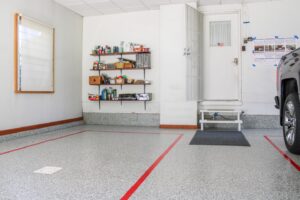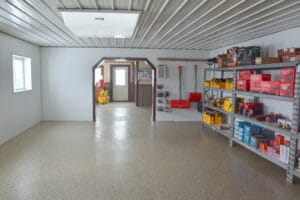Many homeowners and property owners may not be aware of the different floor coating options that exist beyond epoxy or floor paints.
While epoxy is a popular choice, it’s not always the best fit for concrete floors. Polyaspartic floor coatings offer a compelling alternative to epoxy, but knowing when to use which coating solution isn’t easy for homeowners.
That’s what this article (and Top Coat Concrete) is here for – to provide a better understanding of the best concrete application for a project and explain the differences between polyaspartic coatings and epoxy coatings.
To learn more about the differences between epoxy and polyaspartic concrete floor coatings, let’s take a closer look.
Epoxy Versus Polyaspartic Concrete Floor Coatings
You’ll often see these two terms thrown around interchangeably, but epoxy and polyaspartic coatings are not the same.
When it comes to epoxy vs polyaspartic, they each have drawbacks, and they each have advantages depending on where you use them!
What Is An Epoxy Floor Coating?
Epoxy is a versatile and durable two-part resinous material that comes in many colors and forms.
Epoxy is most often used in industrial and manufacturing settings to protect concrete from scratches and gouges, as it does not absorb stains or bacteria.
It can also be used for crafting and creating custom countertops and other furniture pieces. Recent DIY trends have made epoxy popular for more than just floor coatings, as you can find dozens of channels on social media and Youtube videos showcasing the amazing and unique things people are able to make with epoxy. Its thick consistency allows for embedding fun additions into epoxy countertops, coffee tables, crafts, and more!
Benefits of an Epoxy Floor Coating
Epoxy can be compelling as a floor coating on top of concrete because of how hard it gets and how long it lasts. Because it’s so rigid, epoxy can be great for climate-controlled spaces in which the underlying flooring isn’t expected to shift, contract, or expand due to temperature fluctuations. It can last for years in basements and storage rooms.
It’s also quite affordable as a concrete floor coating.
Epoxy can be applied in very thick layers and still dry clear, as thick as a half-inch or more in many settings.
Drawbacks of an Epoxy Floor Coating
That’s also the source of epoxy’s two biggest drawbacks.
First, any concrete floor exposed to the elements or changes in temperature can be prone to slight contraction and expansion over time. Because epoxy is so rigid, it doesn’t handle these changes well and can, in fact, crack as a result.
Second, because epoxy is so hard, it can chip over time and exposure to repeat wear-and-tear. Rather than dent or scratch, epoxy often simply chips away, much like old paint.
Finally, clear epoxy is prone to yellowing over time when exposed to sunlight and UV rays, which can be unsightly.
What is a Polyaspartic Floor Coating?
Polyaspartic floor coatings have a similar look and application process to epoxy, but are made from polyurea, a derivative of urethane.
Polyaspartic coatings are more flexible than epoxy and won’t yellow due to UV rays, making them highly resistant to the sun’s rays and repeat exposure to outdoor light.
This type of coating is generally applied in a thinner application than epoxy.
Benefits of Polyaspartic Floor Coatings
Polyurea coatings are much more flexible than epoxy, solving some of the inherent drawbacks of the highly rigid and thick epoxy.
Due to their higher strength with a thinner application, polyaspartic coatings provide increased durability while offering greater flexibility than epoxy, along with excellent heat, cold, salt and chemical resistance. This makes them an ideal choice for indoor and outdoor areas such as garages, pools, walkways, patios, warehouses, and other multi-use spaces.
Polyaspartic coatings can be tinted or colored in a variety of ways, and they can accommodate unique flakes for aesthetics as well as slip-resistance.
Drawbacks to Polyaspartic Floor Coatings
Polyaspartic coatings are generally limited to a ⅛ inch thick coating or less. For floors with deep gouges or dimples, it may not create quite the seamless appearance and function as a thick new epoxy coat.
They also tend to be more expensive than epoxy at the time of installation.
The Bottom Line On Polyaspartic Versus Epoxy
When it comes to selecting a floor coating for different floor locations, polyaspartic and epoxy are great options for the right space.
- For outdoor or mixed indoor/outdoor floors exposed to cold weather and the elements, polyaspartic is the best choice due to its flexibility, chemical and salt resistance, and an ability to resist yellowing from sunlight and UV exposure. They’re also incredibly durable and have replaced epoxy as the most common choice in most applications.
- For interior, climate-controlled floors like basements, epoxy is an excellent option due to its durability and affordability. For DIY projects, epoxy is a common go-to.
Generally, we stick with polyaspartic coatings in most applications in Pittsburgh and Western Pennsylvania due to its ability to withstand a wider variety of elements and abuse.
Get A High-Quality Floor Coating in Western Pennsylvania
Are you looking for the perfect floor coating for your home or business in Western Pennsylvania or Pittsburgh? Our experienced team of professionals have been providing epoxy and polyaspartic flooring services for years, and we’d love to come see your space.
Top Coat Concrete has the experience to help you find the best solution for your space that fits your budget.
Call today to set up a free consultation and learn which floor coating is right for you.
